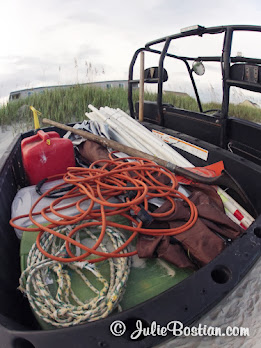Q: What kind of sea turtles nest in North Myrtle Beach?
A: Mostly loggerheads (Caretta caretta); “northern sub-species” that nests in GA, SC, NC; genetically distinct from “southern” (Florida) species; population is much smaller than southern.
A: Mostly loggerheads (Caretta caretta); “northern sub-species” that nests in GA, SC, NC; genetically distinct from “southern” (Florida) species; population is much smaller than southern.
Q: When do they nest?
A: About May until about mid-August.
A: About May until about mid-August.
Q: How big are they?
A: About 3’ long and almost as wide; 250-350 pounds.
A: About 3’ long and almost as wide; 250-350 pounds.
Q: How do they make the nest?
A: They dig with their back flippers.
A: They dig with their back flippers.
Q: How long does it take?
A: About 30-45 minutes just to dig; another 30-45 minutes to emerge from ocean, crawl up the beach and return to ocean.
A: About 30-45 minutes just to dig; another 30-45 minutes to emerge from ocean, crawl up the beach and return to ocean.
Q: How deep are the eggs?
A: Bottom of the nest is typically about 18” but topmost eggs can be only 8-10” from surface.
A: Bottom of the nest is typically about 18” but topmost eggs can be only 8-10” from surface.
Q: How many eggs per nest?
A: Average of 120 ping pong sized eggs.
A: Average of 120 ping pong sized eggs.
Q: How long does it take the eggs to hatch?
A: 45 - 65 days depending on the sand temperature.
A: 45 - 65 days depending on the sand temperature.
Q: Does the mother protect the nest?
A: No, once she the eggs are laid, the mother returns to the ocean and never sees the nest, eggs or hatchlings again.
A: No, once she the eggs are laid, the mother returns to the ocean and never sees the nest, eggs or hatchlings again.
Q: Why is a nest moved?
A: When it is laid below the spring high tide line and in danger of being overwashed or washed away because of beach erosion.
A: When it is laid below the spring high tide line and in danger of being overwashed or washed away because of beach erosion.
Q: What can harm the eggs?
A: Too much heat, too much water, bacteria in nest and nest diggers (roots, ants, sand crabs, dogs, people).
A: Too much heat, too much water, bacteria in nest and nest diggers (roots, ants, sand crabs, dogs, people).
Q: What are the main predators of hatchlings?
A: Ants, ghost crabs, dogs, birds, fish, people.
A: Ants, ghost crabs, dogs, birds, fish, people.
Q: What are the main predators of adult turtles?
A: Sharks, boats/ships, fishing nets and lines, trash, pollutants, diseases, obstructions on beach, people.
A: Sharks, boats/ships, fishing nets and lines, trash, pollutants, diseases, obstructions on beach, people.
Q: When is the best time to see a turtle nesting or a nest hatching?
A: Both events usually take place at night and according to turtle time. To feel safe, the nesting turtles need a NATURAL habitat (dark, quiet, motionless). To have the best chance, the hatchlings need NATURAL lighting with no obstructions between the nest and the ocean.
Q: Where do hatchlings go when they enter the ocean?
A: Small turtles float in the Sargasso Sea along the major North Atlantic currents.
Q: How many hatchlings survive to sexual maturity?
A: No one really knows but recent research suggest 1 in 1,000.
Q: What do I do if I find a hatchling on the beach during the day?
A: The hatchling needs to get into the water as quickly as possible. It should be placed on the wet sand at the water line to rehydrate if necessary. If it is active, it can be walked out beyond the breakers and released into the water. It is against state and federal law to remove the hatchling from it's natural environment.
Q: What if I see a sick or injured sea turtle on the beach?
A: If a turtle has stranded on the beach, it is sick or injured. Do not push back into the water. Call the NMB Sea Turtle Patrol at 843 213-9074 or the SCDNR Hotline at 1-800-922-5431. It is recommended that the turtle be shaded and wet towels placed on it's carapace to avoid overheating.
Q: Can I take home a piece of shell or part of a turtle skeleton?
A: All sea turtles in the US are state and federally protected. It is against the law to have any live turtles or their parts.
A: Both events usually take place at night and according to turtle time. To feel safe, the nesting turtles need a NATURAL habitat (dark, quiet, motionless). To have the best chance, the hatchlings need NATURAL lighting with no obstructions between the nest and the ocean.
Q: Where do hatchlings go when they enter the ocean?
A: Small turtles float in the Sargasso Sea along the major North Atlantic currents.
Q: How many hatchlings survive to sexual maturity?
A: No one really knows but recent research suggest 1 in 1,000.
Q: What do I do if I find a hatchling on the beach during the day?
A: The hatchling needs to get into the water as quickly as possible. It should be placed on the wet sand at the water line to rehydrate if necessary. If it is active, it can be walked out beyond the breakers and released into the water. It is against state and federal law to remove the hatchling from it's natural environment.
Q: What if I see a sick or injured sea turtle on the beach?
A: If a turtle has stranded on the beach, it is sick or injured. Do not push back into the water. Call the NMB Sea Turtle Patrol at 843 213-9074 or the SCDNR Hotline at 1-800-922-5431. It is recommended that the turtle be shaded and wet towels placed on it's carapace to avoid overheating.
Q: Can I take home a piece of shell or part of a turtle skeleton?
A: All sea turtles in the US are state and federally protected. It is against the law to have any live turtles or their parts.
























